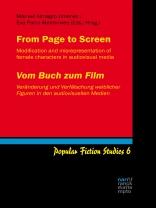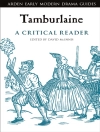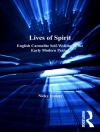For a long time now, women have struggled for the vindication of their rights and for their visibility. This struggle may seem a story of success, maybe not complete or equal for all women, but at least one which slowly but surely carries with it the promise of equality for all women. However, a closer look reveals that in various fields of culture the representation of women frequently undergoes a manipulation which makes the image of women lose the intention initially attempted.
This is often the case with adaptations of literary texts to the
screen, when the initial literary message is changed because of, for example, marketing demands or some ideological stance. Rarely do we find the opposite case where the indifferent or emasculated original female characters are turned into guardians and/or apologists of feminine power. The present volume focuses precisely on the way in which the image of women is modified in films and TV series, when compared with the original literary texts.
Spis treści
Manuel Almagro-Jiménez / Eva Parra-Membrives
'I WANT MY MONEY BACK’: Some Considerations on the Dialectics of
Texts and Films
PART 1 CHILDREN’S STORIES FOR ADULTS
Lorena Silos Ribas
HEIDI GOES KAWAII: The Evolution of Fräulein Rottenmeier in the Animated Versions of Johanna Spyri’s Novels
Bruno Echauri Galván / Silvia García Hernández
AN ENGLISH GIRL IN THE STATES. The Impact of Context and Genre on the Film Adaptation of Roald Dahl’s Matilda
Yiyi López Gándara
GENDER EDUCATION AND INTERMEDIALITY. A Look at the
Reimagining of Secondary Female Characters from Book to Blockbuster
PART 2 THE FANTASTIC: FROM THE PAST AND THE FUTURE
Marta Mariño-Mexuto
FROM 'WIFE OF MY BOSOM’ TO 'FEMALE THING’: E. A. Poe’s Ligeia and Roger Corman’s The Tomb of Ligeia
Miguel Ayerbe-Linares
ÉOWYN VOM BUCH ZUM FILM. Peter Jacksons Verfilmung von Tolkiens Der Herr der Ringe
Christiane Limbach
GAME OF THRONES & DAS LIED VON EIS UND FEUER. Untersuchung der Darstellung von Frauen am Beispiel von Missandei
Pedro Alemany Navarro
VERSIONS OF SELF-SEARCH AND SELF-TRANSCENDENCE IN A POSTHUMAN PARADIGM: The Case of Motoko Kusanagi (Ghost in the Shell)
Sergio Cobo-Durán/ Irene Raya Bravo
WONDER WOMAN. From Page to Screen
PART 3 FOR WOMEN WAR IS NEVER OVER
Alberto Lena
MGM’S THREE COMRADES: Frank Borzage, F. Scott Fitzgerald and Hollywood’s Courageous Weimar Women
Manuel Almagro-Jiménez
'WIE OFT?’ OR LOVE IN TROUBLED TIMES?: The Cinematographic Adaptation of A Woman in Berlin
Leopoldo Domínguez
VERFILMUNG VON ERINNERUNGSLITERATUR. Zur Darstellung der Figur Hanna Schmitz aus Bernhard Schlinks Der Vorleser
PART 4 DEMANDING THEIR OWN VOICE, STATING THEIR OWN NEEDS
Margarita Estévez-Saá
'O JAMESY LET ME UP OUT OF THIS’. Molly Bloom in Joseph Strick’s and Sean Walsh’s Films
Montserrat Bascoy Lamelas
KATHARINA BLUM: OPFER ODER TÄTER? Die weibliche Hauptfigur in Heinrich Böll und in Volker Schlöndorff und Margarethe von Trotta
Claudia Garnica de Bertona
THE FEMALE BODY AS STAGE FOR VIOLENCE. Elfriede Jelinek’s The Pianist and its Film Version by Michael Haneke
Eva Parra-Membrives
DIE EWIGE SCHULD DER EVA. Frau und Sünde in Petra Hammesfahrs Die Sünderin und der Netflix-Serie The Sinner
PART 5 (MUSIC IS) A WORLD WITHIN ITSELF
Marina Tornero Tarragó
THE PORTRAYAL OF THE BAD GIRL CARMEN. Eternal Hybridity of High and Low Entertainment
Rocío Cobo-Piñero
FROM CIVIL RIGHTS CHRONICLER TO CHANEL Nº 5. Mainstreaming Nina Simone
Jiří Měsíc
SHEKHINAH IN THE MUSIC VIDEOS OF LEONARD COHEN
LIST OF AUTHORS
O autorze
Prof. Dr. Eva Parra-Membrives ist Professorin für deutsche Literatur und Übersetzung an der Universität Sevilla, Spanien.
Prof. Dr. Manuel Almagro ist Professor für Englische und Amerikanische Literatur an der Universität Sevilla, Spanien.












